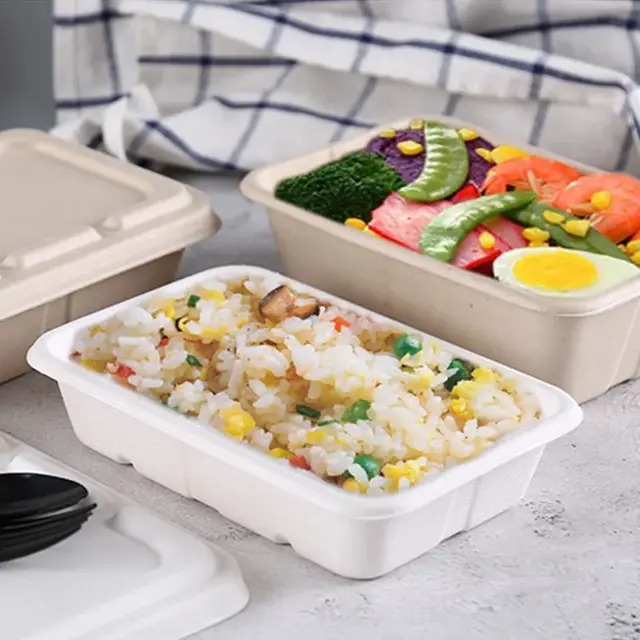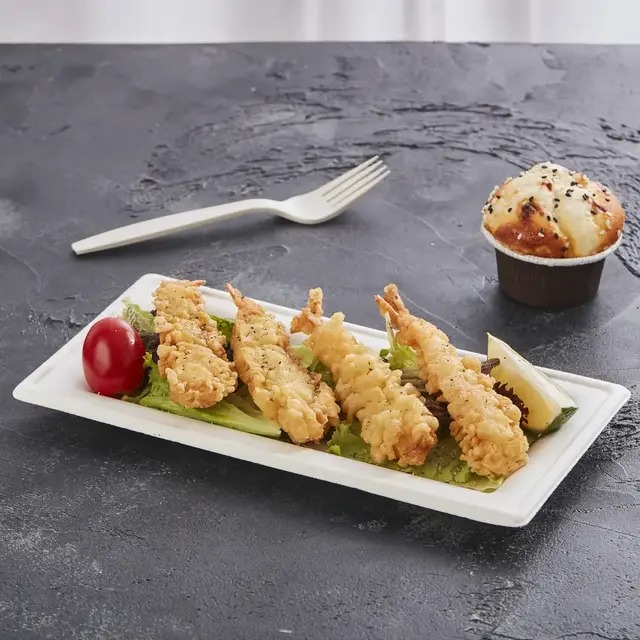+86-136-0073-8328 nancy.huang@geotegrity.com
- All
- Product Name
- Product Keyword
- Product Model
- Product Summary
- Product Description
- Multi Field Search
Views: 194 Author: Site Editor Publish Time: 2025-05-24 Origin: Site








In an era dominated by sustainability and the urgent need to reduce plastic waste, a once-overlooked by-product of the sugar industry is now gaining the recognition it deserves — Bagasse. Derived from the fibrous residue left after extracting juice from sugarcane, bagasse is rapidly transforming the packaging world. But what exactly is it? Why is it essential today? And how are products like Bagasse Bowls, Bagasse Boxes, Bagasse Cups, Bagasse Plates, Bagasse Trays, and Bagasse Cup Lids playing a role in the biodegradable packaging movement?
Bagasse is the dry pulpy residue that remains after sugarcane stalks are crushed to extract their juice. Traditionally, this material was either discarded or used as a biofuel in sugar mills. However, with the global push towards biodegradable packing, bagasse has emerged as a valuable raw material for creating eco-friendly food containers and packaging products.
Unlike petroleum-based plastics, bagasse is 100% biodegradable, compostable, and renewable. Within 60–90 days in a commercial composting environment, bagasse products completely break down without leaving harmful toxins behind. This makes bagasse a preferred choice for companies and consumers who want to minimize their environmental footprint.
Bagasse also requires less energy to produce compared to plastic or Styrofoam, making it an environmentally responsible choice right from the manufacturing stage. Moreover, its sturdy texture and thermal resistance make it ideal for both hot and cold food applications — a rare trait in the world of sustainable materials.
With the growing interest in sustainable alternatives, various bagasse-based products have emerged in the market. Each product caters to a specific need while collectively contributing to eco-conscious consumption.
Bagasse Bowls are perfect for soups, salads, noodles, and curries. Their thick walls and insulating properties retain heat efficiently while remaining cool to the touch externally. They do not collapse or become soggy, even with hot liquids, making them a practical and environmentally safe alternative to plastic or foam bowls.
Ideal for takeaway and delivery services, Bagasse Boxes are leak-proof, grease-resistant, and microwave-safe. These clamshell-style containers maintain the integrity of hot and cold foods during transport and are especially valued in the food delivery industry for their sturdiness and clean presentation.
The pairing of Bagasse Cups with Bagasse Cup Lids provides a 100% compostable beverage solution. Unlike PLA or plastic lids, bagasse lids do not warp or melt under heat. These cups are ideal for coffee shops and corporate canteens aiming to eliminate single-use plastic waste.
From party platters to cafeteria servings, Bagasse Plates are designed to hold large quantities of food without bending. They come in various sizes and are both elegant and functional, often used in weddings, picnics, or food festivals aiming for zero waste.
Bagasse Trays are compartmentalized containers suitable for airline meals, hospitals, and school lunches. They are durable enough to handle transportation and stacking, all while ensuring eco-friendliness.
| Bagasse Product | Typical Use | Key Feature |
|---|---|---|
| Bagasse Bowl | Soups, salads, hot foods | Heat-resistant and sturdy |
| Bagasse Box | Takeout meals, fast food | Leak-proof and microwave-safe |
| Bagasse Cup | Hot & cold beverages | Compostable, no plastic lining |
| Bagasse Cup Lids | Cup covering for beverages | Heat-resistant, secure fit |
| Bagasse Plate | Events, parties, food courts | Holds heavy and saucy foods |
| Bagasse Tray | Institutional meals, catering | Multiple compartments, stackable |

The main reason for choosing bagasse over plastic or polystyrene is its environmental sustainability. Traditional packaging materials persist in landfills for hundreds of years, leaching toxins and harming marine and wildlife ecosystems. Bagasse, by contrast, decomposes naturally and enriches the soil.
Additionally, bagasse production uses agricultural waste that would otherwise be burned — a practice responsible for air pollution in sugarcane-producing countries. By converting this waste into useful products, bagasse supports circular economy models and reduces carbon emissions.
Another compelling factor is that bagasse does not contain PFAS (per- and polyfluoroalkyl substances) often found in plastic coatings, which are linked to serious health concerns. Thus, bagasse products are not just good for the planet, but also safer for human use.
Yes. Bagasse is heat-resistant up to 200°F (93°C) and retains its shape and structure even when used with hot liquids or microwave heating.
Absolutely. Bagasse containers can withstand freezing temperatures and are safe for storing foods in the fridge or freezer without becoming brittle.
Bagasse can be composted at home, though the process may take longer than in industrial facilities. Crushing or shredding the product into smaller pieces can help accelerate decomposition.
No. Properly manufactured bagasse products are odorless and tasteless, ensuring they do not affect the food’s flavor or aroma.

As global legislation tightens around single-use plastics, the demand for biodegradable packing solutions like bagasse is surging. Governments, especially in Europe and North America, are encouraging industries to switch to compostable alternatives. Meanwhile, consumers are becoming more environmentally conscious, often choosing brands that prioritize sustainability.
Innovation is also on the rise. Manufacturers are exploring ways to blend bagasse with other biodegradable materials for enhanced performance and design flexibility. With continuous advancements, bagasse may soon play a significant role in not just packaging but even construction, textiles, and more.
Bagasse is more than just a trend; it's a sustainable solution that addresses environmental degradation while offering functional, aesthetic, and economic benefits. From a humble sugarcane by-product to a hero of eco-friendly packaging, bagasse is indeed redefining how we think about waste and resource use.